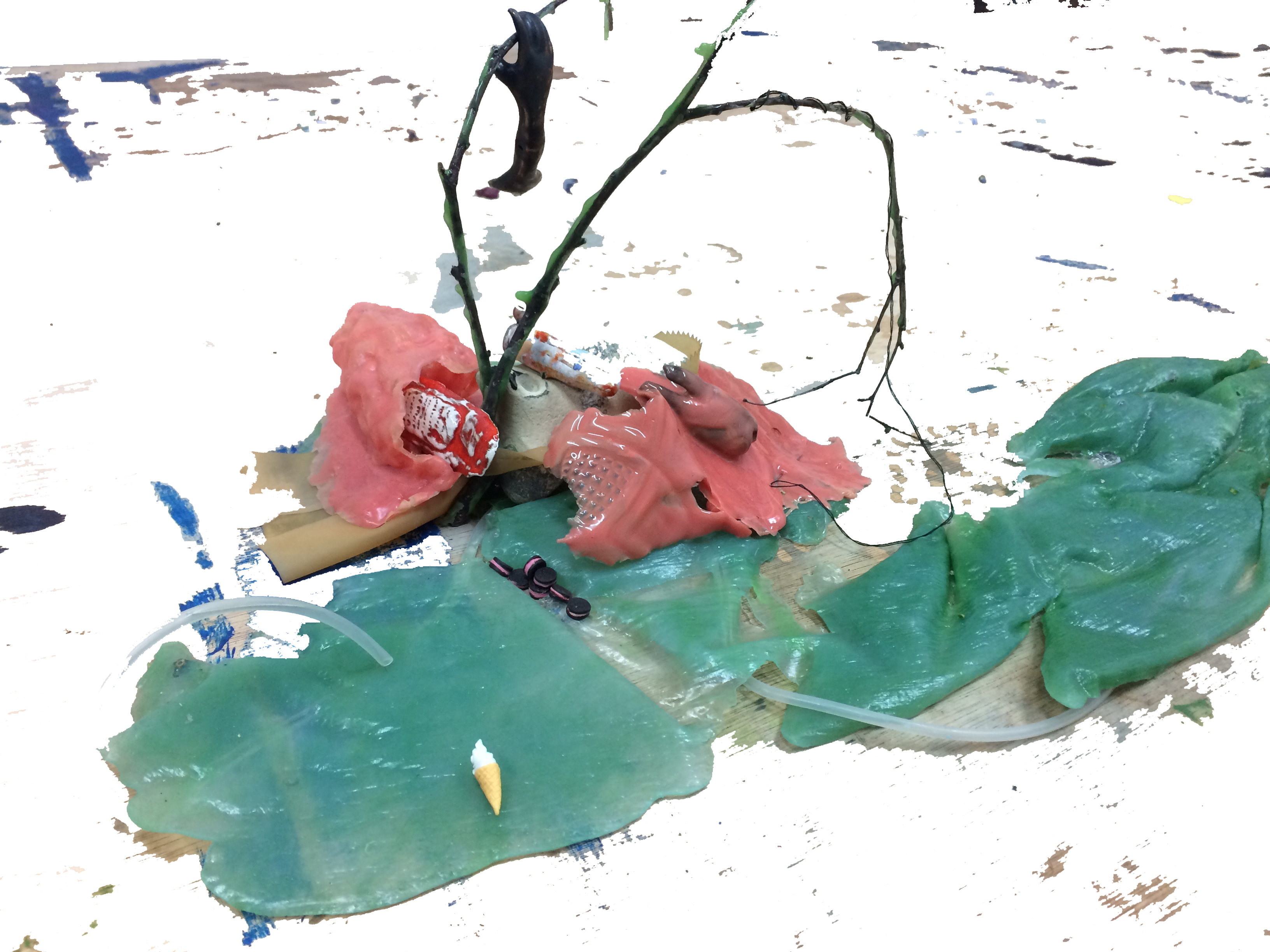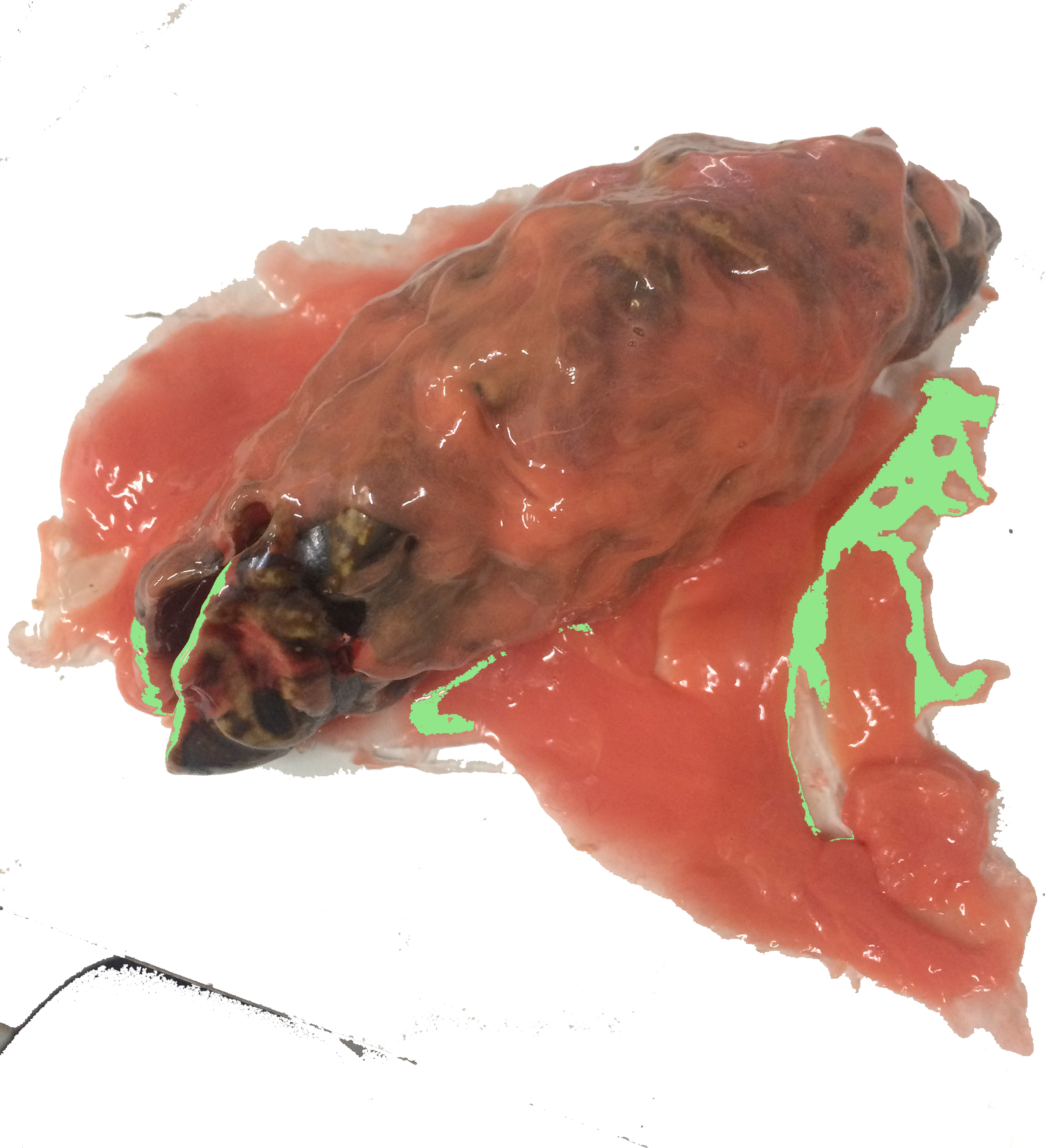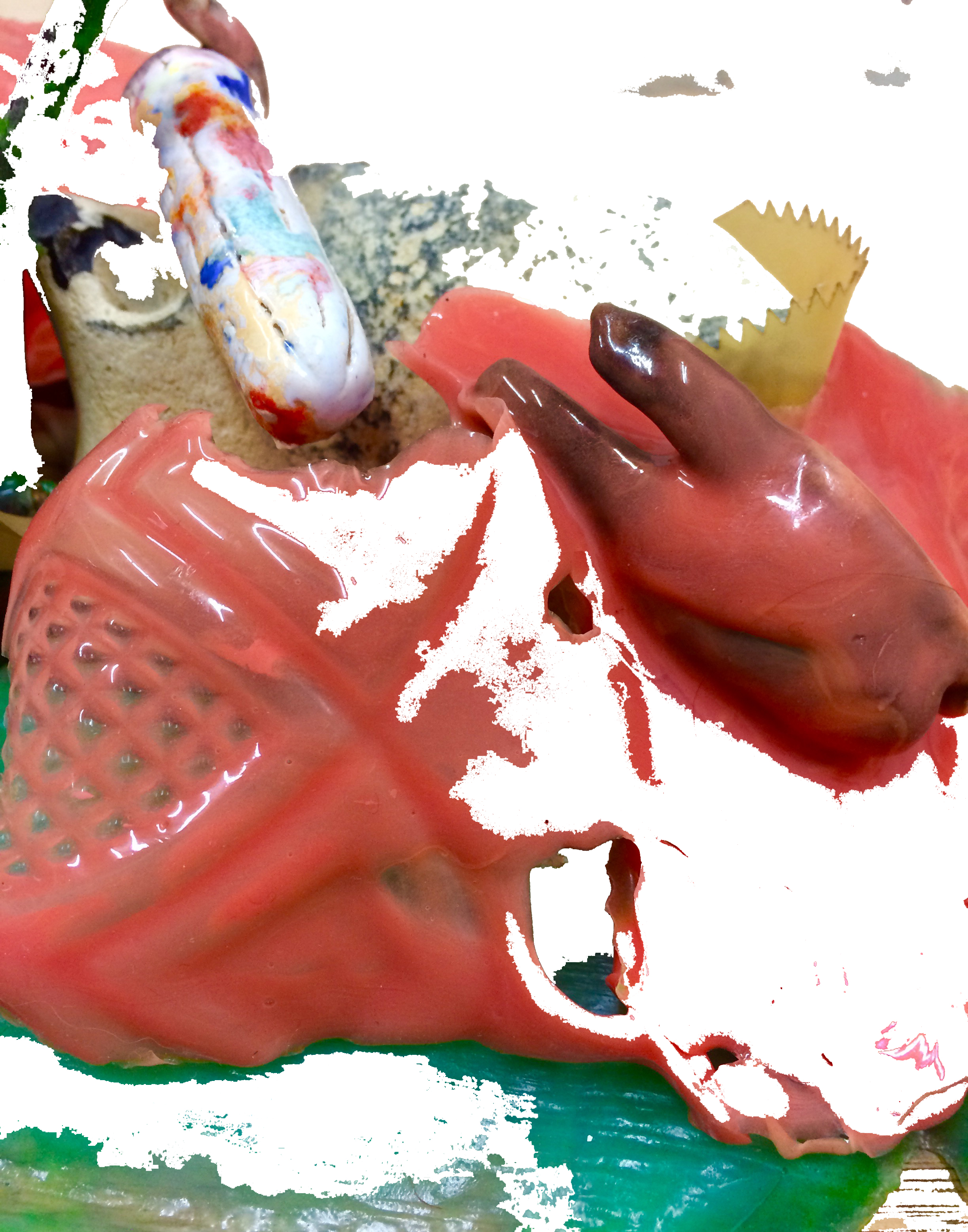]
This work is inspired by Japanese art of Ikebana (and it’s 21th century counterpart, ‘Freakebana’) – initially a practice with a specific set of rules regarding the arrangement of still objects in a way that seeks to emphasize a sense of harmony and inner ‘life’ via their particular placement within a given scene – reviving commonplace objects to a higher (or lower) plane of aesthetic contemplation; ABSINTHE §2guest curated by Georgia Stephenson within THE PARASITE ; invited by Collective Ending.From what I know so far about the ceramics she is making, they reference the inverse of a human form, something that fits onto a human or aids them in someway. A plaster, a tampon - are both parasites of their own in this way, they attach briefly (although to assist rather than take from) their host. They fill up. And then they are discarded. As well as ceramics, Natalia is peppering her installation with emoji-like miniature motifs. These oreos, ice-cream cones and carrots reference digestion and momentarily, I imagine my own stomach making a quaint attempt at communicating with me in this form. She tells me her friend took one look at some of her process photos and called it a 'seaside nightmare', a 'pink sea creature washed up on the shore'. Bloated guts and plastic spill from within this freakebana. That's one stomach that didn't communicate fast enough. Natalia's references to bodily process and organic matter strike me as most eerie when paired with latexes and silicones that wouldn't ever break down (even if you asked them nicely). Words by Georgia Stephenson











